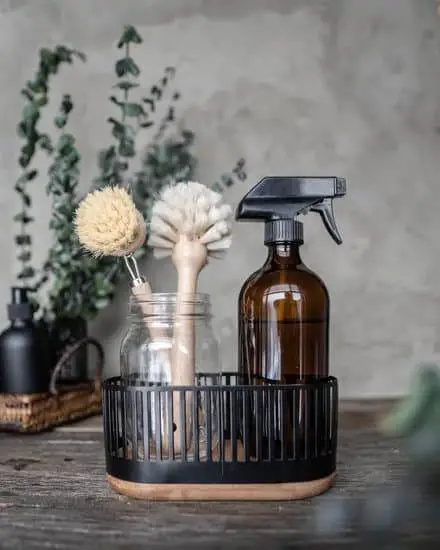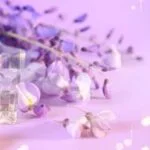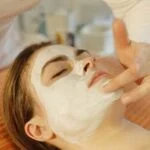Aromatherapy is the practice of using essential oils to enhance physical and psychological well-being. In this article, we will dive into the world of do it yourself aromatherapy recipes, exploring the benefits and history of this ancient healing practice. Essential oils have been used for centuries in various cultures for their therapeutic properties, and today they continue to be a popular holistic remedy for a wide range of ailments.
Firstly, we will provide an introduction to aromatherapy, shedding light on its origins and the wealth of benefits it offers. We will delve into the history of aromatherapy and how it has evolved over time, as well as the modern-day applications that make it such a valuable tool for promoting health and wellness.
Next, we will explore the basics of essential oils – from understanding their different types to discovering their unique therapeutic properties. It is important to have a good understanding of essential oils before creating your own DIY aromatherapy recipes to ensure you are using them safely and effectively.
Additionally, we will share tips and guidelines for safely using essential oils in DIY aromatherapy recipes. Safety should always be a top priority when working with potent substances like essential oils, so these insights will help you navigate your way through this ancient yet powerful healing art. Whether you are looking to relax, boost your energy levels, or find peace from stress – our DIY aromatherapy recipe section can aid you on your journey towards better mental health.
Essential Oils 101
When it comes to creating your own DIY aromatherapy recipes, it’s essential to have a good understanding of the different types of essential oils and their unique therapeutic properties. Essential oils are concentrated extracts from plants, each with its own distinct aroma and potential health benefits. Here’s a quick guide to some of the most popular essential oils and their therapeutic properties:
- Lavender: Known for its calming and relaxing properties, lavender essential oil is often used to promote sleep and reduce stress and anxiety.
- Peppermint: With its invigorating and cooling scent, peppermint essential oil is great for boosting energy, alleviating headaches, and aiding digestion.
- Lemon: Bright and uplifting, lemon essential oil is commonly used to improve mood, increase focus, and purify the air in your home.
In addition to these well-known essential oils, there are many others that offer a wide range of benefits. For example:
- Eucalyptus: Ideal for respiratory support and clearing congestion
- Tea Tree: Recognized for its antimicrobial and antiseptic properties
- Rosemary: Often used for memory retention, mental alertness, and hair growth stimulation
Before using any new essential oil in your DIY aromatherapy recipes, it’s important to research its potential effects as well as any safety considerations. Some essential oils may not be suitable for certain individuals or medical conditions, so always proceed with caution.
Now that you have a basic understanding of the different types of essential oils available, you can start experimenting with creating your own custom blends for relaxation, energy, sleep, stress relief, and more. Remember that when it comes to essential oils and aromatherapy, a little goes a long way. Start with just a few drops of each oil in your recipes and adjust as needed based on your personal preferences.
Safety First
When creating your own aromatherapy blends at home, it is crucial to prioritize safety. Essential oils are powerful and concentrated substances that can cause skin irritation or adverse reactions if not used properly. Here are some tips and guidelines to ensure that you are using essential oils safely in your DIY aromatherapy recipes:
- Do a patch test: Before using any new essential oil on your skin, perform a patch test to check for any allergic reactions or sensitivities. Dilute a small amount of the essential oil in a carrier oil and apply it to a small area of your skin. Wait 24 hours to see if any redness, itching, or irritation occurs.
- Proper dilution: Essential oils should always be diluted before applying them to the skin. This helps prevent irritation and makes the oils safer to use. Follow recommended dilution ratios and guidelines for specific essential oils when creating your DIY aromatherapy blends.
- Avoid sun exposure: Some essential oils can make your skin more sensitive to sunlight, leading to burns or discoloration. Be cautious when using citrus oils such as lemon or bergamot, and avoid sun exposure after applying these oils to your skin.
In addition to these safety tips, it is important to store your essential oils properly, away from direct sunlight and heat, in dark glass bottles with tightly sealed lids. Educate yourself about each essential oil’s properties and potential risks before incorporating it into your aromatherapy recipes. By following these guidelines, you can enjoy the benefits of aromatherapy while ensuring that you are using essential oils safely and responsibly in your DIY creations.
DIY Aromatherapy Recipes for Relaxation
Aromatherapy is the practice of using natural plant extracts, such as essential oils, to promote physical and emotional well-being. One of the most popular applications of aromatherapy is creating custom essential oil blends for relaxation. These calming blends can help reduce stress, anxiety, and promote a sense of peace and tranquility. By using simple techniques and high-quality essential oils, you can create your own DIY aromatherapy recipes for relaxation right in the comfort of your home.
When it comes to creating DIY aromatherapy recipes for relaxation, it’s important to start with high-quality essential oils. Some popular essential oils for relaxation include lavender, chamomile, bergamot, and frankincense. Each of these essential oils has its own unique therapeutic properties that can help promote calmness and relaxation. For example, lavender is well-known for its soothing and calming effects on the mind and body, making it a great choice for a relaxation blend.
To create a simple yet effective DIY aromatherapy recipe for relaxation, you can start by combining a few drops of lavender essential oil with a carrier oil such as jojoba or sweet almond oil. A popular ratio is 3-5 drops of essential oil per teaspoon of carrier oil.
Once blended together, this calming oil mixture can be used in a variety of ways such as added to a warm bath, used in a massage, or simply diffused into the air using an aromatherapy diffuser.
| Essential Oil | Therapeutic Properties |
|---|---|
| Lavender | Soothing and calming effects on the mind and body |
| Chamomile | Promotes relaxation and helps with sleep |
| Bergamot | Uplifting and stress-reducing properties |
DIY Aromatherapy Recipes for Energy and Focus
Feeling sluggish and unfocused? Aromatherapy may be the solution for you. Harnessing the power of invigorating essential oils, you can create custom blends to boost your energy levels and sharpen your mental clarity. Whether you need a pick-me-up during a long workday or want to enhance your focus during study or creative projects, DIY aromatherapy recipes for energy and focus can help improve your overall productivity.
Understanding Invigorating Essential Oils
Certain essential oils are known for their ability to stimulate the mind and body, promoting alertness and mental clarity. Peppermint oil, for example, is celebrated for its energizing properties and its ability to combat mental fatigue. Meanwhile, citrus oils like lemon and orange are popular choices for their uplifting scent that can help improve mood and focus. Additionally, rosemary oil is often used to promote mental alertness and memory retention.
DIY Aromatherapy Recipes
To create your own invigorating essential oil blend, you can combine a few drops of each selected oil with a carrier oil such as jojoba or sweet almond oil. An energizing blend might include equal parts of peppermint, lemon, and rosemary essential oils. You can use this blend in a diffuser to fill the room with an energizing aroma or apply it topically after diluting it properly in a carrier oil.
Tips for Usage
When using aromatherapy for energy and focus, it’s important to use caution and follow safety guidelines. Always perform a patch test before applying any essential oils to your skin directly. It’s also crucial to dilute essential oils properly to avoid skin irritation or adverse reactions.
Additionally, keep in mind that some essential oils can be photosensitive, meaning they can make your skin more sensitive to sunlight. As with any aromatherapy practice, moderation is key – stick to recommended doses and avoid overexposure.
Aromatherapy for Sleep
A restful night’s sleep is essential for overall well-being, and aromatherapy can be a wonderful tool to promote relaxation and better sleep. Creating custom essential oil blends tailored to your specific needs can be a simple and effective way to enhance your nightly bedtime routine. By using the right combination of calming scents, you can create a soothing atmosphere that signals to your body and mind that it’s time to unwind and prepare for sleep.
To get started with creating your own custom essential oil blend for sleep, consider using relaxing scents such as lavender, chamomile, and ylang-ylang. These essential oils are known for their calming properties and can help reduce stress and promote relaxation. You can use these oils on their own or blend them together to create a personalized aroma that suits your preferences.
One popular DIY aromatherapy recipe for promoting better sleep is a lavender chamomile pillow spray. To make this soothing spray, simply combine 10-15 drops of lavender essential oil, 10-15 drops of chamomile essential oil, and 1-2 teaspoons of witch hazel in a small spray bottle.
Fill the rest of the bottle with water, shake well before each use, and lightly spritz your pillow and bedding before bedtime. This gentle mist will release calming scents as you drift off to sleep, creating a tranquil environment conducive to restfulness.
| Essential Oils | Calming Properties |
|---|---|
| Lavender | Reduces stress and promotes relaxation |
| Chamomile | Soothes the mind and helps induce sleep |
| Ylang-Ylang | Calms the nervous system and reduces anxiety |
Aromatherapy for Stress Relief
Aromatherapy has been used for centuries as a natural way to promote relaxation, reduce stress, and improve overall well-being. In today’s fast-paced world, many people are turning to aromatherapy as a holistic approach to managing stress. By using essential oils derived from plants, individuals can create their own stress-busting blends right at home. These do it yourself aromatherapy recipes can be personalized to suit individual preferences and needs.
Choosing the Right Essential Oils
When creating DIY aromatherapy recipes for stress relief, it’s important to select the right essential oils known for their calming and soothing properties. Some popular options include lavender, chamomile, rose, and bergamot. These essential oils have been shown to help reduce anxiety and promote relaxation when used in aromatherapy.
Simple Stress-Busting Blends
One of the simplest stress-busting blends you can make at home is a calming room spray. Simply mix lavender and chamomile essential oils with water in a spray bottle and spritz it around your living space whenever you need a moment of tranquility. Another easy blend is a relaxing bath oil made with ylang-ylang and bergamot essential oils mixed with carrier oil like sweet almond or jojoba.
Customizing Your Aromatherapy Experience
The beauty of do it yourself aromatherapy recipes is that you can customize them to suit your personal preferences. Experiment with different combinations of essential oils until you find the perfect blend that helps alleviate your stress and promotes relaxation. Whether you prefer a floral scent or something more woodsy and grounding, there are endless possibilities when it comes to creating personalized stress-busting blends through aromatherapy.
Bonus Tips and Tricks
In conclusion, incorporating aromatherapy into your daily routine can have numerous benefits for your overall well-being. From relaxation and stress relief to energy and focus, there are countless do-it-yourself aromatherapy recipes that you can try at home. Understanding the history and benefits of aromatherapy, as well as different types of essential oils and their therapeutic properties, is essential to using them safely and effectively.
By following the tips and guidelines for safely using essential oils in DIY aromatherapy recipes, you can create custom blends for relaxation, energy, sleep, and stress relief. Whether it’s a calming blend to unwind after a long day or an invigorating blend to kickstart your morning, experimenting with different essential oil combinations can be a fun and rewarding experience.
Additionally, incorporating aromatherapy into your daily routine doesn’t have to stop at creating blends. You can also explore creative ways to use aromatherapy such as making homemade room sprays or natural perfumes. By finding what works best for you, you can enjoy the benefits of aromatherapy in different aspects of your life. So go ahead, give some do-it-yourself aromatherapy recipes a try and see how they can enhance your overall sense of well-being.
Frequently Asked Questions
How Do You Make Homemade Aromatherapy?
Homemade aromatherapy can be made by combining essential oils with a carrier oil, such as coconut or jojoba oil, and using them in a diffuser, bath, or for massage. It’s important to dilute the essential oils properly to avoid skin irritation.
What Are Some Good Essential Oil Combinations?
Some good essential oil combinations include lavender and peppermint for relaxation, lemon and rosemary for focus and concentration, and eucalyptus and tea tree for respiratory support. It’s important to research the properties of each oil before combining them.
What Is the Easiest Way to Make Essential Oils at Home?
The easiest way to make essential oils at home is through the process of steam distillation. This involves placing the plant material in water and heating it to create steam, which is then cooled and collected as essential oil. However, this method requires specific equipment and knowledge of plant extraction techniques.

Are you looking for a natural way to improve your health and wellbeing?
If so, aromatherapy may be the answer for you.






